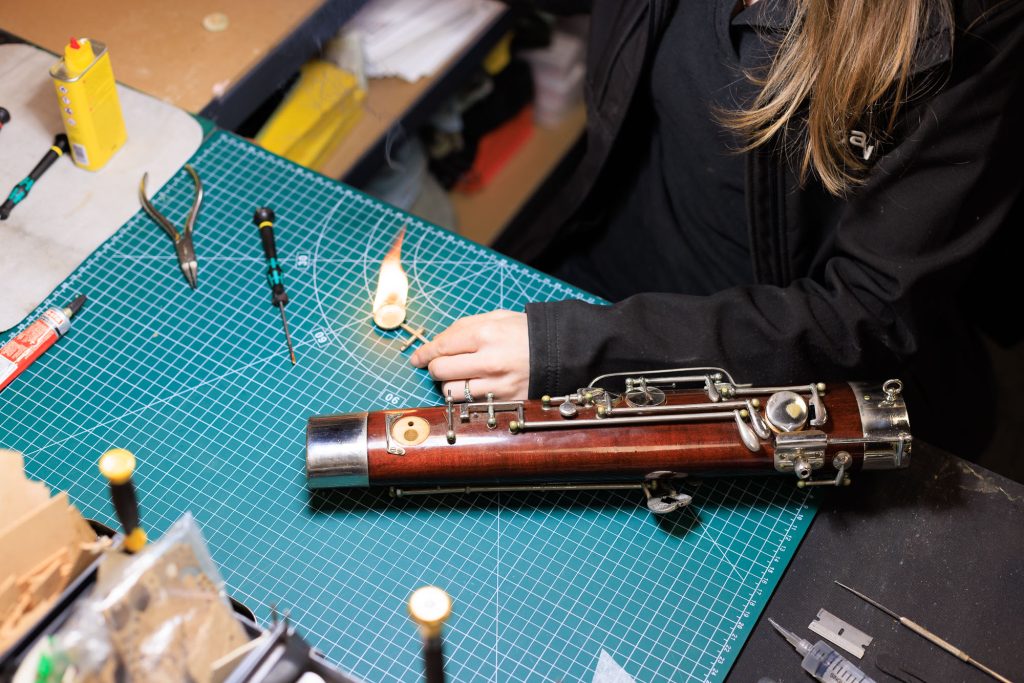A View from the Bench
29th July 2025By Abi Taylor, Head Technician
In collaboration with the British Double Reed Society, their Spring 2025 edition for ‘Double Reed News’ features Abi Taylor, our Head Technician, who offers a personal look into life at the repair bench. “A View From the Bench” shares insights into the craft that keeps our instruments – and performances – in top form.
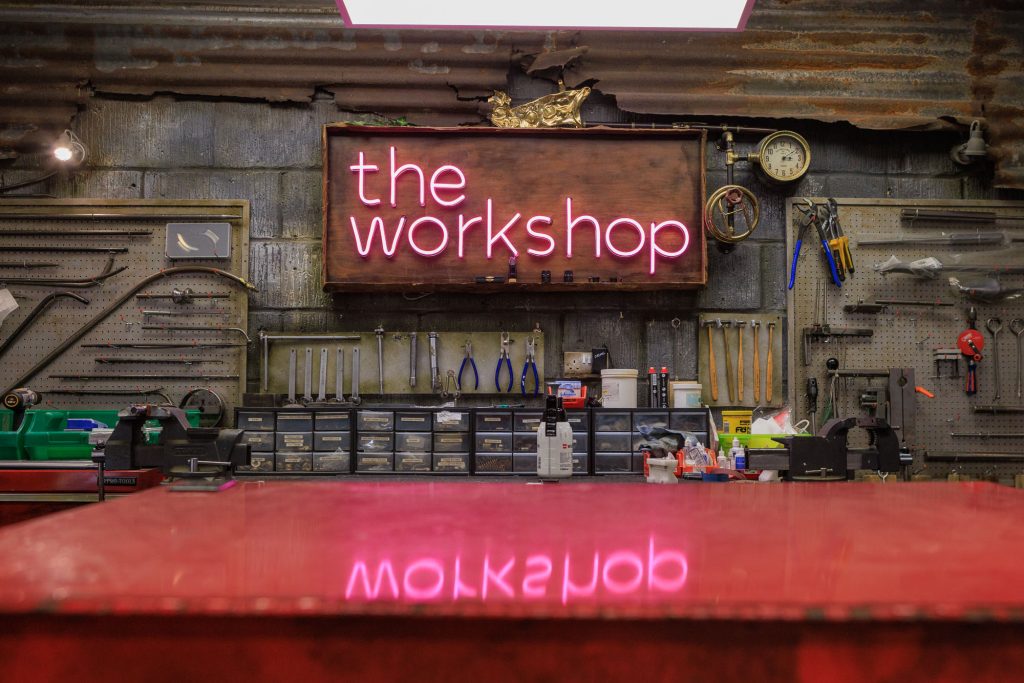
First Impressions
One of the most common questions we receive in our workshop is “how did you get into this?” – as wide-eyed customers survey our busy space, full of interesting tools and repairers tinkering away. For many people, visiting a repair workshop out of necessity is their first exposure to our industry.
I remember the feeling of wonder at seeing such a concentrated bubble of specialism and interest for the first time. This question is often followed by variations of “you must love your job,” which is an entirely reasonable conclusion. I have found this career to be immensely, unexpectedly fulfilling.
The first time my bassoon developed a problem, my instinct was to bring it to my dad – the fixer of things. I vividly remember him sitting with the boot joint in his hands, slowly rotating and closely inspecting it in an attempt to understand the purpose of all the linkages and levers. He did this silently for about half an hour before announcing that we should take it to a professional repairer. Knowing what I know now, I am so proud of him for that decision.
We arrived at the counter of Dawkes, my local repair workshop, where the energy in the room was exciting and like nothing I’d seen before. Gary Hobdell did something quite similar to my dad – he took the boot joint, rotated it slowly in front of his silent, scrutinising gaze. The difference was that Gary nonchalantly flicked the G# pad open and his face lit up with a smile. A sticky pad, nothing more.
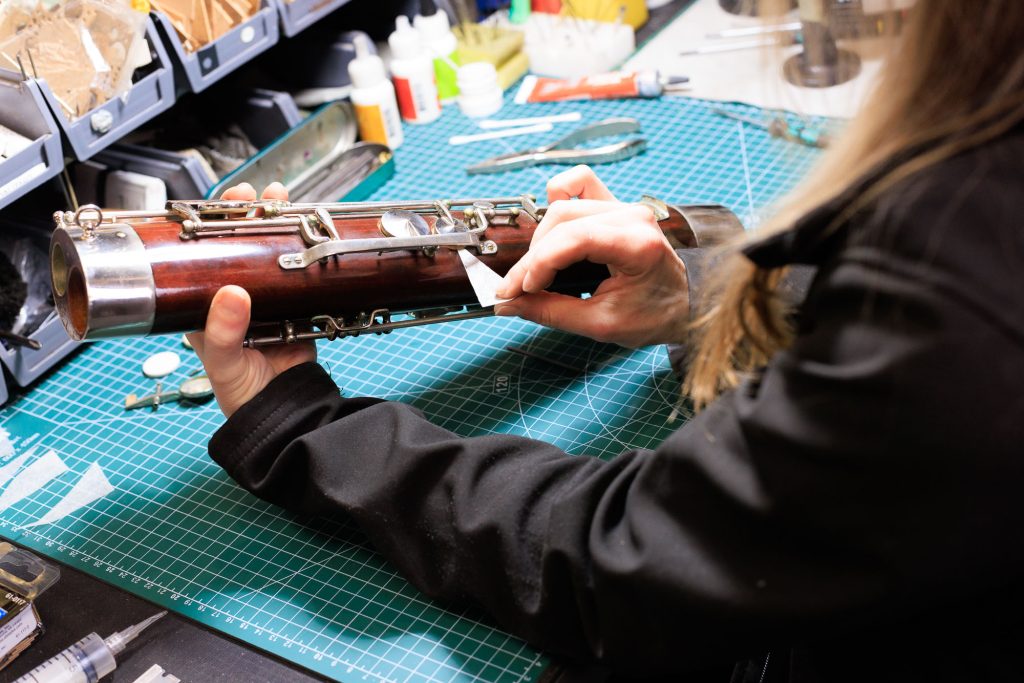
He handed the boot joint back to us with a glow of satisfaction and said there would be no charge. It was such an amazing example of the difference all his years of experience made – he was able to identify and resolve the problem within seconds and seemed personally thrilled to do so. I didn’t know it at the time, but that experience definitely shaped my impression of repairers and the good work they do.
At the beginning of my apprenticeship under Gary, five years later, I was amused and surprised to find a lot of bassoons coming my way from other experienced repairers in the team. Being a player obviously put me at a level of familiarity with the bassoon that was difficult for non-players to achieve.
Double reed instruments have entirely unique behaviours and variable factors, and being able to confidently play test them seemed to be the biggest barrier. Colleagues around me seemed relieved to have a bassoonist on the team, and I was happy to be useful. Seeing how others were intimidated by this family of instruments made me feel fearless in my approach to all types.
Pathways into the Trade
As with most handcrafted skills, professional dedicated tuition from the start is ideal for optimal competence. We are so fortunate in the UK to have an internationally recognised full-time 3-year degree course in Instrument Making and Repair at Newark College. This course is far from overrun with applicants as it is so niche, but it’s a real hub of education in this field, offering violin, piano, guitar, and woodwind repair/making courses.
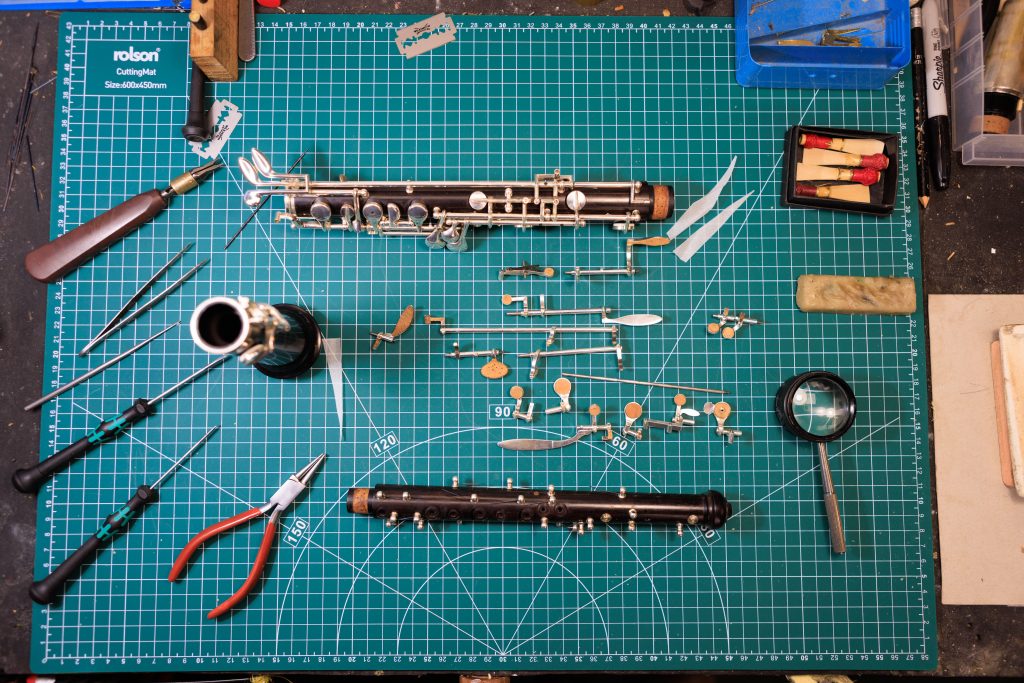
Over the three years of study, applicants will make an instrument from scratch – including the wooden or metal body, pillars, keywork – and learn all the fundamental material skills and knowledge required to build on. There are elements of woodworking, metalworking, toolmaking and engineering, as well as acoustics and the history of instrument development.
Graduates from Newark College will certainly be more employable, despite their training continuing into the ‘real world’ after college. Reed making is also an excellent gateway into reducing some of the mystique of instrument craft – a unique opportunity for double reed players with a penchant for crafts.
What is the Job Like?
A repairer’s workbench is an extension of themselves – whether it’s organised chaos or meticulously tidied each day. The wide range of faults that come through the door can be surprising and exciting, and it’s a very physical job that can be demanding at times.
Being able to find problems and improve them quickly gives a sense of victory to the repairer and relief for parents of students. Advanced and professional musicians are so grateful for technical resolutions that allow them to express themselves musically without hesitation. I personally have found this human part of the job very meaningful: acquiring the knowledge and experience to advise people in their best interest and feel trusted to do so.
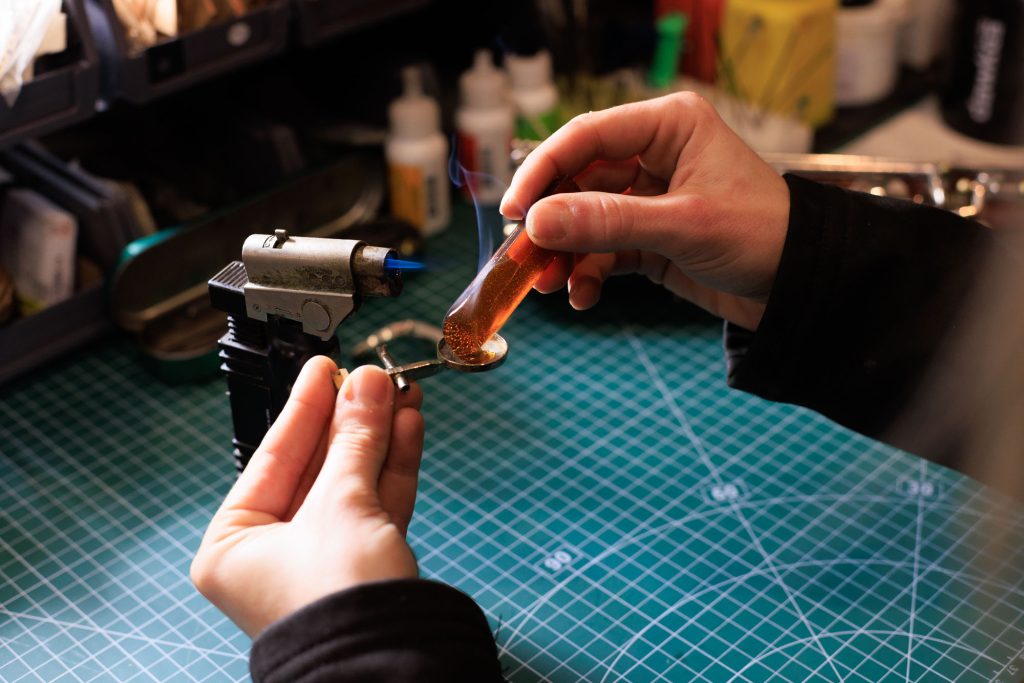
Longer-form, heavily involved servicing and overhaul work is a series of small achievements that lead to a larger, delayed gratification. When working in detail on an instrument and focusing on each key and tone hole, you can lay the foundations for an excellent end result. Each key that has been perfectly re-fitted, each cork that’s been beautifully shaped, is a private, quiet victory.
A repairer should be equipped with patience and a self-punishing desire to find fault with their own work. The natural materials – cork and felt – used throughout woodwind instruments have properties that make the work extremely tactile. Touch and feel, and the familiarity you gain with different instrument types, gives you insight that’s hard to put into words.
Gary told me oboes were his favourite to work on. He loved the unforgiving precision of it all. “An oboe will feel dreadful right up to the final moments where it will feel undeniably correct,” he explained. Very firm cork pads and close-tolerance keywork mean precise pad work and regulation is fundamental to oboe setup.
It’s still incredible to me how an oboe can feel so unstable due to a small fraction of a leak – somewhere seemingly unrelated to the symptom. The joy to be found in this struggle is that when the instrument is happy, it really lets you know. A lot of oboes actually come supplied with a small screwdriver in the case – perhaps some subtle foreshadowing of what is to come. As a technician, I try to encourage people not to fiddle with things, but this feature is an indication of the oboe’s explicit demands.
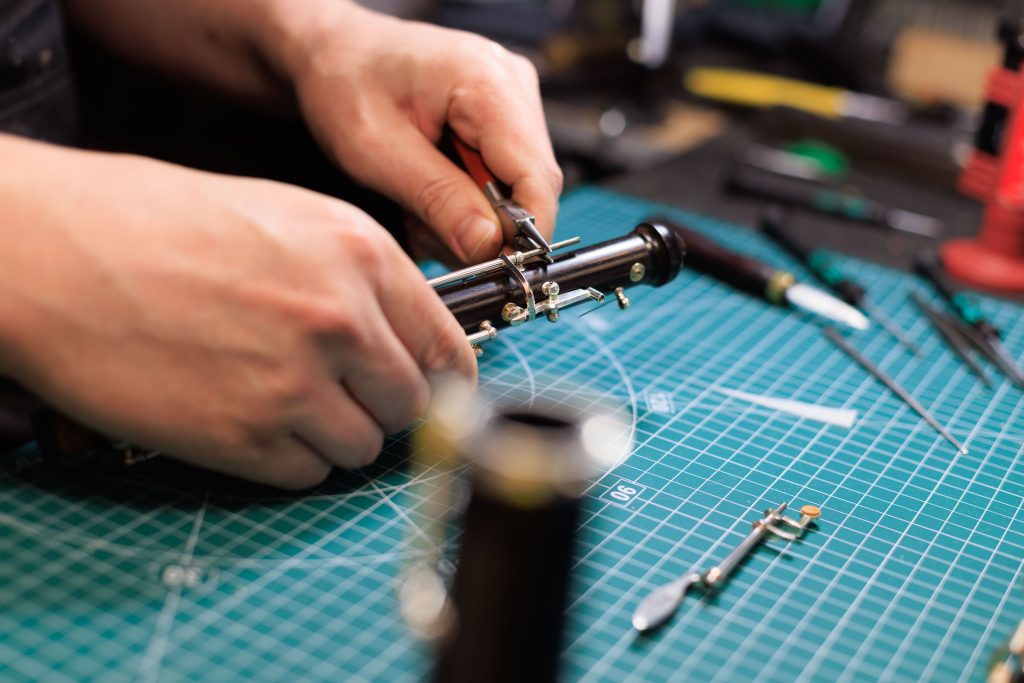
Different Career Paths
There are a number of workshops in the UK connected to retail shops selling instruments. These workshops are typically well-equipped and geared for handling large quantities of repairs, with teams of salaried technicians working together. I personally enjoy working in a team – we share ideas, methods, and sometimes bouncing thoughts around sparks the ‘eureka’ moment that resolves a challenging repair.
Many repairers choose to open their own private business, free to work in a way that suits them. Some people changing careers later in life will start part-time while transitioning to full-time. Most will devote a room in their house or build a dedicated shed.
Alternatively, one could apply their skills toward instrument manufacture. A few makers in the UK, like Howarth of London, produce world-renowned oboes in their Worthing factory – one of the last remaining instrument makers in the UK.
The different stages of manufacture mean that a production line of technicians often handles different tasks. Some factories have dedicated key makers who might make the same key, day in and day out, to an extremely precise and high standard. Others might be responsible for installing pads, corks, and carrying out tactile work.
In Summary
It goes without saying that the repair industry is extremely important and valuable. Sitting unseen behind the great players who inspire and shape cultural trends are trusted technicians who dedicate their lives to the art of instrument repair, design, and manufacture.
As long as people are playing acoustic instruments, highly skilled technicians must be ready and waiting to support them in their musical journey.
Don’t forget to take a look at the British Double Reed Society’s publications and explore their website for more events and resources.
